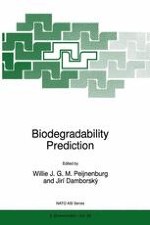
1996 | OriginalPaper | Buchkapitel
Introduction, Main Conclusions and Recommendations of The Workshop “QSAR Biodegradation II”
verfasst von : W. J. G. M. Peijnenburg, J. Damborský
Erschienen in: Biodegradability Prediction
Verlag: Springer Netherlands
Enthalten in: Professional Book Archive
Aktivieren Sie unsere intelligente Suche, um passende Fachinhalte oder Patente zu finden.
Wählen Sie Textabschnitte aus um mit Künstlicher Intelligenz passenden Patente zu finden. powered by
Markieren Sie Textabschnitte, um KI-gestützt weitere passende Inhalte zu finden. powered by
For most organic chemicals, biodegradation is the dominant transformation pathway, contributing significantly to the attenuation of their environmental concentrations. When biodegradation is complete and mineralisation to carbon dioxide or methane occurs, organic carbon and other elements from the substance, like for instance nitrogen and sulphur, are released and reassimilated into natural elemental cycles. To understand the fate of a chemical and to assess its ecological impact, information on the biodegradability is critical. Basically two types of biodegradation data are required. The first type of information is on whether the substance is completely biodegradable or if persistent metabolites are formed. In the case of formation of persistent metabolites an additional impact assessment will need to be conducted for them and the long-term potential for impacts due to accumulation evaluated. The second type of data is on the rate of biodegradation in relevant environmental compartments. This information is used to predict the concentrations to which organisms will be exposed in the environment. The rate data can also be used to assess the potential for accumulation.